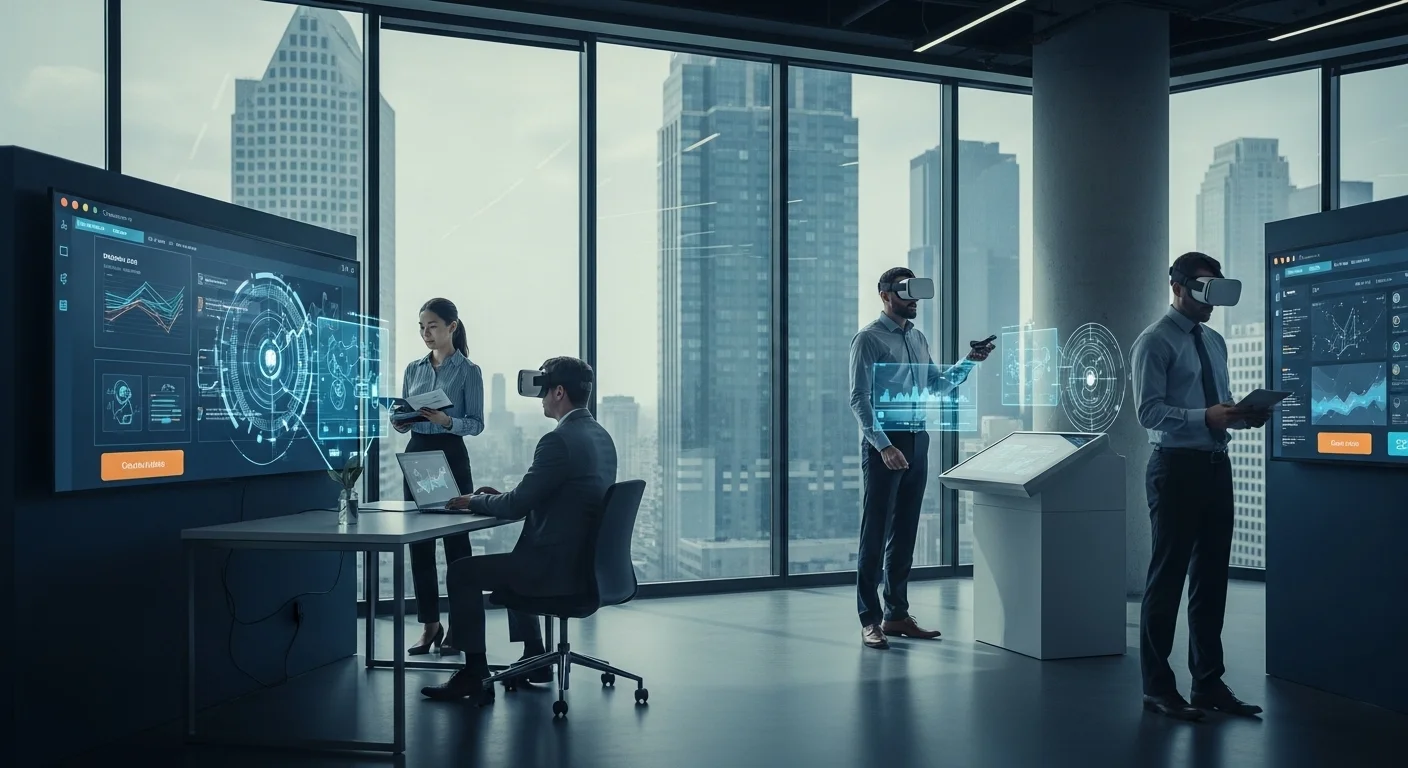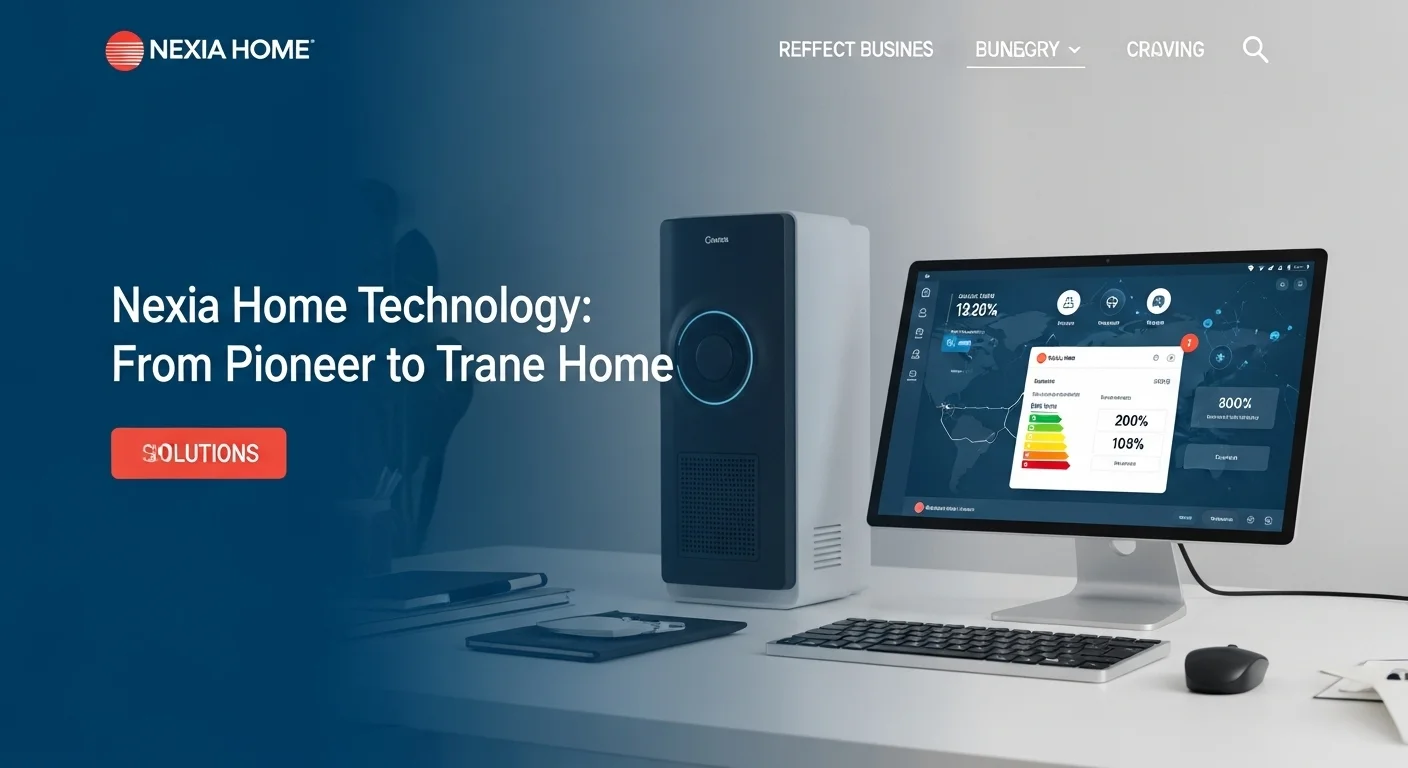The Invisible Bridge: A Human's Guide to Tech Interfaces

Executive Summary
In my two decades working in tech, I've seen countless brilliant ideas fail for one simple reason: they were a pain to use. Technology, at its core, is supposed to serve people. The crucial connection point, the handshake between you and a machine, is the interface. It’s everything from the screen you tap on your phone to the hidden language that lets your favorite apps talk to each other. This article is my personal guide to understanding this world. We'll break down what makes an interface feel intuitive, why businesses live or die by their design choices, and how this all comes together in the place we care about most: our homes. Using real-world examples, like the beautifully simple Control4 system, we'll see how great design can turn complex technology into something that just *works*.
Table of Contents
Table of Contents
- What Exactly is a Tech Interface?
- The Main Players: UI, API, and Hardware Interfaces
- Why Great Interfaces Are Great for Business
- Case Study: The Smart Home Interface
What is an Interface and why is it so Important?
In the world of technology, 'interface' is a word we hear all the time, but what does it really mean? Think of it as a bridge. It's the point where two different things meet and communicate. Most often, it's the bridge between you and a piece of technology, but it can also be the bridge between two different programs or devices. I've always believed that the quality of this bridge defines everything. A well-built interface feels so natural you barely notice it; it empowers you and makes complex tasks feel simple. A poorly built one is frustrating and can make even the most powerful technology useless. For a business, this isn't just a detail—it's the foundation of their customer relationships, employee efficiency, and ultimately, their success.
The Main Players: UI, API, and Hardware Interfaces
Interfaces come in a few key flavors, and you interact with all of them every day. The most familiar is the User Interface (UI). This is the visual part of the technology you see and touch—the buttons, icons, and menus on your phone or computer. I remember the old days of computing with command-line interfaces where you had to be a programmer just to open a file. The shift to Graphical User Interfaces (GUIs) with their friendly icons was a revolution that opened up computers to everyone. Now, we're talking to our devices with Voice User Interfaces (VUIs) like Siri and Alexa, and the next wave is already on the horizon with gestures and even brain-computer interfaces.
Then there's the unsung hero, the Application Programming Interface (API). If the UI is for people to talk to computers, the API is for computers to talk to other computers. It's a set of rules that lets different software share information seamlessly. Every time you check the weather on your phone, book a flight that pulls data from multiple airlines, or pay for something online with PayPal, you're seeing APIs at work. They are the invisible glue holding our digital world together. For businesses, they are the key to building powerful, interconnected services.
Finally, we have Hardware Interfaces, which are the physical plugs and ports like USB, HDMI, and Ethernet. These standards ensure our physical gadgets can connect to one another. Together, these three types of interfaces create the ecosystem that makes our modern tech world possible. The success of any product depends on how well all three are designed to work in harmony.
The Interface in Business: Driving Value and Experience
In today's market, a great interface is one of the biggest competitive advantages a company can have. I've seen businesses transform their fortunes by focusing on the customer experience. A website that’s easy to navigate or an app that’s a joy to use builds trust and loyalty, turning casual visitors into paying customers. The opposite is also true; a confusing checkout process is the fastest way to lose a sale. It’s not just about customers, either. When companies give their employees software that is clunky and hard to use, they're creating frustration and killing productivity. Investing in great design isn't a cost; it’s one of the smartest investments a business can make.
The strategic power of APIs is also enormous. By creating their own APIs, companies can let other developers build on their platforms. This creates a vibrant community and new revenue streams. Think of how companies like Google or Salesforce have built entire ecosystems around their APIs, making their tools indispensable for thousands of other businesses.
Home Automation: A Case Study in Interface Excellence
If you want to see just how critical a good interface is, look no further than the modern smart home. You can have the most advanced lights, thermostats, cameras, and speakers, but if controlling them all is a confusing mess, the whole system is a failure. This makes home automation the perfect place to study great design in action.
The heart of a smart home is its home automation interface—a central control panel, which could be a touchscreen, a mobile app, or even your voice. The ultimate challenge here is to hide incredible complexity behind a mask of pure simplicity. The best home automation interface is one that anyone in the family, from a child to a grandparent, can use without a second thought. It needs to be fast, reliable, and personal. For example, creating a 'Movie Night' scene that dims the lights, lowers the shades, and turns on the TV should be a one-tap affair.
For those who prefer a bigger screen, a home automation web interface is key. It should offer the same simple controls but also provide a space for more advanced setup and management. In the high-end market, the Control4 interface is a perfect example of this philosophy. I've worked with it many times, and its reputation is built on providing a polished, professional experience that just works. The Control4 interface is designed to be incredibly intuitive, integrating thousands of different devices into one seamless system. Whether you're using their touchscreen or a mobile app, the experience is consistent and reliable. It’s a powerful reminder that the true measure of technology isn’t what it can do, but how easily a person can get it to do what they want.

A Complete Guide to Interfaces in Technology and Business
To truly appreciate a great interface, we need to look under the hood. It’s not just about pretty screens; it's about solid architecture, smart design philosophy, and robust security. For any business, mastering these elements is the key to creating experiences that feel effortless and building technology that stands the test of time.
The Tech Behind the Scenes: APIs and System Integration
APIs are the backbone of modern software. Think of them as a menu at a restaurant. In the past, many used a style called SOAP, which was like a very strict, formal dining experience—heavy and complex. Today, the most popular style is REST. A RESTful API is like a modern restaurant with a clear, simple menu. You use standard actions (GET for reading the menu, POST for placing an order) to interact with it. It’s flexible and easy for developers to work with. Now, a new style called GraphQL is gaining traction. Imagine being able to tell the waiter, 'I want the steak, but with the sauce from the chicken dish and a side of fries instead of salad.' GraphQL lets an application ask for exactly the data it needs, which is incredibly efficient.
From a business perspective, how you manage your APIs is critical. I've seen companies thrive by treating their APIs as actual products. They provide excellent documentation (the 'cookbook'), support for developers, and a clear strategy for how they can be used. This turns their platform into a foundation that others can build upon, creating a powerful ecosystem that benefits everyone.
Designing for People: The Heart of a Great Interface
When it comes to designing for users, the golden rule is User-Centered Design (UCD). This isn't just a process; it's a philosophy rooted in empathy. It means putting the user at the absolute center of every decision. In my own work, this cycle is constant:
- Listen: I start by talking to users, observing them, and understanding their frustrations and goals.
- Imagine: We brainstorm and sketch out ideas, focusing on solving their problems.
- Build: We create simple prototypes, from rough wireframes to polished mockups, to bring the ideas to life.
- Test: We put these prototypes in front of real users and watch. Their feedback is pure gold. Then, we repeat the cycle, refining the design until it feels right.
A Closer Look at Smart Home Interfaces
The smart home is where all these principles are put to the test. Technically, it's a wild west of different wireless protocols like Wi-Fi, Zigbee, and Z-Wave. New standards like Matter are trying to act as a universal translator, but the interface is still what has to make sense of it all for the user.
From a design standpoint, creating the best home automation interface is about managing that complexity. A great home automation user interface offers a simple dashboard for daily tasks but lets you dig deeper if you want to. For example, the main screen might show you your security status and climate with simple controls. But a few taps away, you can set up complex schedules or automations. A good home automation web interface is also vital for setup and for users who prefer a bigger canvas to work on. It needs to provide a bird's-eye view of your entire home without being overwhelming.
This is where a system like the Control4 interface really shines. Its success comes from blending rock-solid technical integration with an obsessive focus on the user. They curate a list of devices that are guaranteed to work, taking the guesswork out of it for the homeowner. Their user interface, particularly OS 3, is a masterclass in clarity. It’s organized by room, which is how we naturally think about our homes. This consistency and simplicity are what people are paying for—a premium experience where the technology disappears into the background.
Cybersecurity: The Unseen Layer of Trust
Every interface—be it a website login, an API, or your smart home interface could mean someone disabling your security cameras or gaining access to your home. That’s why security can't be an afterthought; it has to be baked into the design from day one. This means using strong authentication, encrypting data, and constantly testing for weaknesses. Ultimately, a secure interface is what builds trust, and in the digital world, trust is everything.

Tips and Strategies to Master Your Tech Experience
Whether you're running a business or just trying to get the most out of your gadgets, understanding interfaces can completely change your relationship with technology. It’s about making smarter choices and demanding better design. Here are some practical tips I’ve gathered over the years, with a special focus on the smart home, where the interface is king.
Strategies for Businesses: Choosing and Building Better
- Buy for Usability, Not Just Features: When you’re choosing software for your team, don't just get dazzled by a long list of features. Ask the people who will actually use it every day to try it out. I've seen companies waste thousands on powerful software that no one used because the interface was a nightmare. An intuitive tool gets adopted quickly and delivers real value.
- Build a Smart API Plan: Don't let your APIs be an afterthought. Create a clear strategy for them. A well-documented, secure API ecosystem is a massive asset that allows your business to be more agile and innovative.
- Live and Breathe User-Centered Design (UCD): If you're building your own products, make UCD your religion. Spend the time and money on user research and testing. It feels slower at first, but it saves you from costly failures down the road. Remember, a bad user experience is one of the top reasons customers leave.
- Secure Every Door and Window: Treat every interface as a potential security risk. Use strong authentication, audit your systems regularly, and design for security from the ground up. A single breach can destroy the trust you've spent years building.
Tips for Consumers and Tech Enthusiasts
- Always 'Test Drive' the UI: Before buying any new tech, watch video reviews that actually show the interface in action. Does it look clean or cluttered? For apps, always use the free trial. You need to know if the experience feels right for *you*.
- Customize Everything: Most interfaces can be personalized. Take 20 minutes to organize your phone's home screen or set up a custom dashboard in a web app. It's a small time investment that will save you hours in the long run.
- Give Good Feedback: If an interface is frustrating, tell the developer! Don't just complain; be specific. 'When I try to do X, I expect Y to happen, but instead Z happens.' This kind of feedback is incredibly valuable and helps make products better for everyone.
Deep Dive: My Checklist for the Best Home Automation Interface
The smart home is where a good interface can bring you daily joy, and a bad one, daily frustration. When I'm evaluating a system, this is what I look for to find the best home automation interface:
- Instant Gratification: When I tap a button, does the light turn on instantly? Any lag makes a system feel cheap and unreliable.
- Effortless Simplicity: Can a guest figure out how to dim the lights without a 10-minute tutorial? The basics should be completely intuitive.
- Consistent Feel: Does the home automation user interface look and work the same on the wall panel, your phone, and the web? Consistency is key to feeling in control.
- It's All About You: How easy is it to create your own scenes and favorites? A great system should adapt to your life, not the other way around.
- Rock-Solid Reliability: Does it just work, day in and day out? Reliability is the most important feature of all. This is where professional systems often have an edge.
- A Powerful Web Portal: A good home automation web interface is crucial for remote access and for setting up more complex automations. It's your command center when you're away from home.
The Future of the Interface
As I look ahead, I see the very idea of an 'interface' is about to change dramatically. The screens we've been staring at for decades are just the beginning.
- Artificial Intelligence (AI): AI will create predictive interfaces that anticipate our needs. Imagine your home's interface automatically adjusting based on the time of day, who is home, and what you typically do.
- Voice User Interfaces (VUI): Voice control will become truly conversational, understanding context and nuance instead of just simple commands.
- Augmented Reality (AR): AR will let us place digital controls directly onto the world around us. Imagine looking at a lamp and simply saying or gesturing 'turn on'.
- Brain-Computer Interfaces (BCI): This is the final frontier. While it's still in the early days, BCI promises a future where we can control technology just by thinking about it—the ultimate invisible interface.
Expert Reviews & Testimonials
Sarah Johnson, Business Owner ⭐⭐⭐⭐
As a small business owner, I found this really insightful. It definitely got me thinking about my own website's interface and customer experience. Great read!
Mike Chen, IT Consultant ⭐⭐⭐⭐
Solid overview. As an IT guy, I appreciated the breakdown of APIs. Some of the technical points could be a little simpler for beginners, but it’s a great resource overall.
Emma Davis, Tech Expert ⭐⭐⭐⭐⭐
Fantastic article! This is one of the clearest explanations of interface design I've read. It perfectly connects the technical side with the human experience. Highly recommended.



